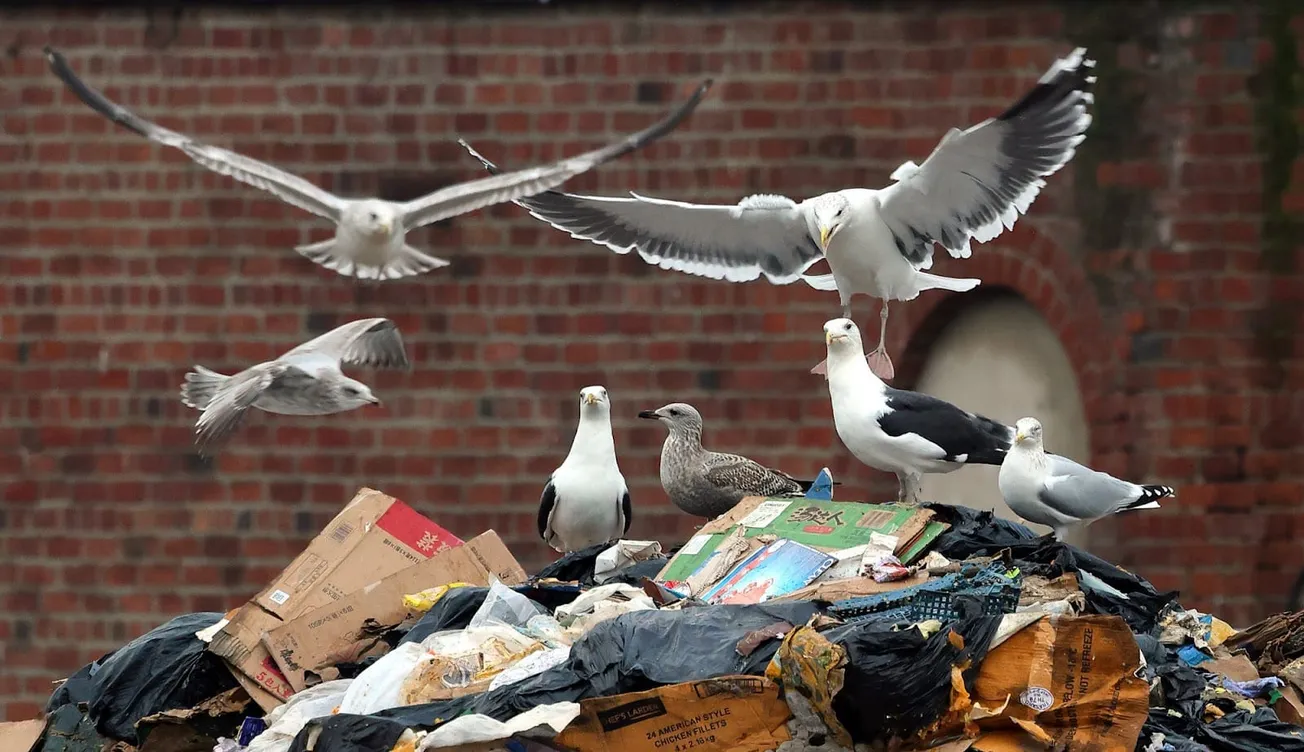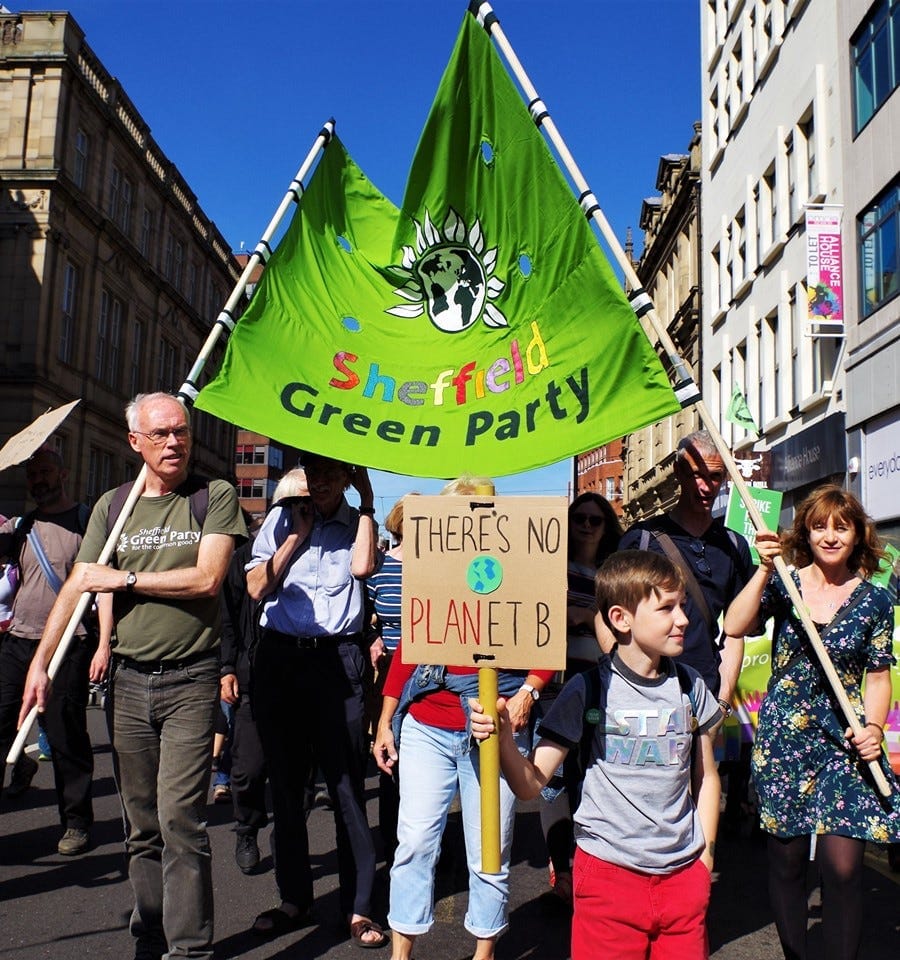As you walk into the Millennium Gallery, bending your path from the Winter Garden and into the light, spacious hallway, you might catch a mural high up on the wall in front of you. It’s called ‘With Burning Patience’.
The mural, a gift from two Chilean brothers to the city of Sheffield, stands nearly six metres wide and two metres tall. An array of dramatic and colourful scenes depicts the toil and misery of the working class, all while pointing to a brighter future. On top is a quote. “Only with burning patience shall we conquer the splendid city which will give light, justice and dignity to all mankind.”
In the 1980s, the mural used to hang in the offices of the Sheffield Co-ordinating Centre Against Unemployment (SCCAU), a “grotty, single-story building” situated on West Street. There, Dr Jillian Creasy met Bernard Little. They discussed social and environmental problems during the days of Margaret Thatcher, and how the pair might make a difference in Sheffield. Bernard also handed Jillian a leaflet to join the Sheffield Green Party.

Fast-forward 35 years and the party now has 13 councillors, having gained five seats in this month’s local elections. The Greens deposed council leader Bob Johnson in Hillsborough and now have the largest number of councillors in their history. And the wins also pushed the council into no overall control, allowing the party to enter into a “cooperative agreement” to run the city with Labour.
Creasy was the city’s first Green councillor. A former GP at Heeley Green Surgery, she took inspiration from the Chilean mural that hung above her. She felt the issues shown in the mural were ones she had encountered as a doctor. And she believed she could fight for the rights, health and prosperity of working people in Sheffield by getting involved in politics.
“I was always interested in community health,” she told The Tribune. “I was not a purely clinical GP and was interested in how people live, their circumstances, and how they impact their health.”

But while she was “very aware of nature” and “very interested in how the environment impacts people’s health,” this didn’t translate into formal political activity until much later. The meeting at SCCAU, however, was the “watershed moment”, she says.
The other thing that drove her into politics was the war in Iraq. Creasy stood three times for the council while the conflict was raging, finishing second in a boundary-change election before finally winning the Greens’ first seat in the Central Ward in 2004. “I was very excited and proud,” she says, becoming emotional as she recounts the moment. “I had worked very, very hard for it.”
When a councillor wins an election, they are presented to the full council in the first meeting back in the council chambers. They are usually walked in by a leading member of their political party. Creasy, though, was the first. Other leading party members kindly offered to walk her into the chambers. In the end, Council chief executive “Uncle Bob” Kerslake did the honours.

“It was a huge amount of work, setting a new direction in my life,” Creasy says. “It makes me feel quite teary to talk about it. I can feel genuinely proud of myself. So can my family, my friends, and all the people who supported me.”
Creasy’s first big campaign was on housing. The Decent Homes Programme was a key moment, she explains. The multi-billion-pound Blair Government initiative was intended to spruce up council houses but Creasy and her team were “knocking on doors of people who had a new kitchen and a bucket on the floor to catch the leak from the roof.”
The Greens campaigned to invest the fund in more substantial renovations. As a result, the council changed tack and the run-down houses were restored in more meaningful ways. Afterwards, an elderly Somali woman who benefitted from the work saw Dr Creasy on the street. She beamed a huge smile and put her thumbs up. “That was one of the happiest moments,” she says.

Back in the early days of the 1980s and 1990s, however, the Sheffield Greens were a small team. Eamonn Ward, an “extremely organised” election agent who helped professionalise the party’s approach in the background, hosted meetings of six or seven people in his Hillsborough front room. Little was there too, as were Rob Unwin and Graham Rowe. Rob Murphy, an “action man” who “got things done”, completed the group.
“We were very unprofessional. We didn’t know what we were doing,” says Little, reflecting on those early days. He kept going because of his passion and belief in Green issues, but he “felt very much alone” at times. He became depressed after election defeats, only to be re-enthused by a difficult problem or a new recruit. Eventually, Little followed in Dr Creasy’s footsteps, winning the Greens’ second seat in the Central Ward in 2006. “It was unbelievable, just unbelievable,” he says. “A spectacular achievement.”
Those early successes were based on “extremely hard, local ward work,” says Ward. They first established themselves as challengers to Labour in the Central Ward by coming second in 2003 before making a final push to win a year later. The Iraq War “was massive” and there was a swathe of Labour voters swinging towards the Greens as a result, but Ward insists it was their local door knocking, canvassing, and building relationships with local residents that helped them to gain a foothold.

Two years after Little’s victory, the Greens got their third councillor in the Central Ward. It was a nervous moment, as “Action Man” Murphy had to wait for a recount while “people with good eyesight” counted the elastic-banded vote batches. In the end he was declared the winner by just 48 votes.
From this point on, the Greens slowly but surely established themselves on the Sheffield political scene. “The Sheffield Greens’ success leaked out of the Central Ward,” says Dr Patrick English, political researcher at YouGov who has studied local politics in the city. Dr English says the Greens’ introduction of the Target to Win approach allowed them to translate their success from one ward to another, while the increasing prominence and importance of Green issues like the environment and climate change further bolstered their broad appeal.
There is also the element of the protest vote. “If you are voting for Labour and are wanting an alternative, the Green Party have stepped in and said, ‘we are now the alternative’,” Dr English says. This protest vote is especially significant in Sheffield after the street trees debacle. “You cannot talk about Sheffield Greens without talking about ‘Treegate’,” he says. “The way that spiralled out of control is why Labour lost its majority due to the infamy they brought upon themselves.”

No one felt the full brunt of “Treegate” more than Alison Teal. Teal, who squeaked home by just eight votes in 2016, was arrested in February 2017 for preventing workmen from chopping down a tree on Chippinghouse Road in Nether Edge. She spent eight hours and 41 minutes in Shepcote Lane Police Station, most of which she says was spent worrying about how her daughter would feel when she came home to find her mum behind bars. A civil case brought against her by Sheffield City Council at Leeds High Court was later dismissed and she was re-elected in 2018 with a stonking majority of more than 1,400.
“We had a sense of moral righteousness,” explains Teal. “We just knew that it was wrong.” She hadn’t even planned to stand in 2016 and was only persuaded to after being told the party didn’t have a woman standing to be councillor. “I was astonished to even be elected as a candidate,” she says. “I was even more astonished when I actually got in.” But she admits the tree scandal was a huge factor in her wins in both 2016 and 2018, with support from former Labour people making her victories almost more a win for the tree campaign than it was for the Green Party.
Also elected for the first time in 2016 was Somalian-born Magid Magid. Two years later he would be sworn in as Sheffield’s youngest-ever Lord Mayor, the first former refugee to take up the position. Teal says Magid has been “tremendously important” in the Greens’ dramatic rise. “He is a marvellous person, tremendous energy, incredibly positive and charismatic,” she says. “He really helped to put the Green Party on the map in Sheffield.”

And in the first sign that the Greens were beginning to break out of the “leafy, middle-class” stereotype, Paul Turpin was elected in working-class Gleadless Valley in 2019. Turpin, who grew up on a council estate and came from a single-parent family, says his background was a key factor in broadening the party’s appeal. “If anybody can win the first seat in Gleadless Valley, it’s me,” he says. “I understood their plight and I was one of them.”
Then came 2021, which saw Green gains across the city. Johnson was deposed in Hillsborough by Christine Gilligan Kubo — described by Teal as the “icing on the cake” of a brilliant day for the party — while Little was re-elected in Walkley after narrowly missing out in 2019.
The Greens also gained seats in Broomhill and Sharrow Vale, Nether Edge and Sharrow and Gleadless Valley. As The Tribune’s elections expert Jason Leman explained after the results, their vote share actually fell from 2019, but the general trend of a Green uprising throughout the decade was undeniable.


The result left them with 13 councillors, just 17 years after Jillian Creasy won their first seat in 2004. And last week it was announced that Teal, Turpin and Douglas Johnson would all be given key roles in a “blended” council executive of Green and Labour councillors. Teal wasted no time in making their new found power count, announcing a wide-ranging council enquiry into the tree scandal on her first day in office.
Gleadless Valley councillor Paul Turpin — now Sheffield City Council’s executive member for inclusive economy, jobs and skills — says the Greens are determined to do as much as they can while they are part of the new co-operative agreement. “Sheffield is at the threshold of something new and fantastic,” he says. “It is brimming with potential and many pieces seem to be falling together at the same time. We have the opportunity to change the future.”
If you enjoyed this newsletter, we’d love you to spread the word about The Tribune by sending it to your friends. Simply forward this email or click the share button below.
If you have a story you would like us to look into, hit reply to this briefing or email editor@sheffieldtribune.co.uk.
We are looking for talented local journalists who believe in our mission and want to write for The Tribune. If that’s you, please email us at the email address above.
If someone forwarded you this newsletter, please join The Tribune’s mailing list to get all our journalism in your inbox.
Comments
How to comment:
If you are already a member,
click here to sign in
and leave a comment.
If you aren't a member,
sign up here
to be able to leave a comment.
To add your photo, click here to create a profile on Gravatar.







